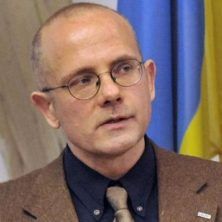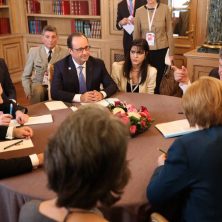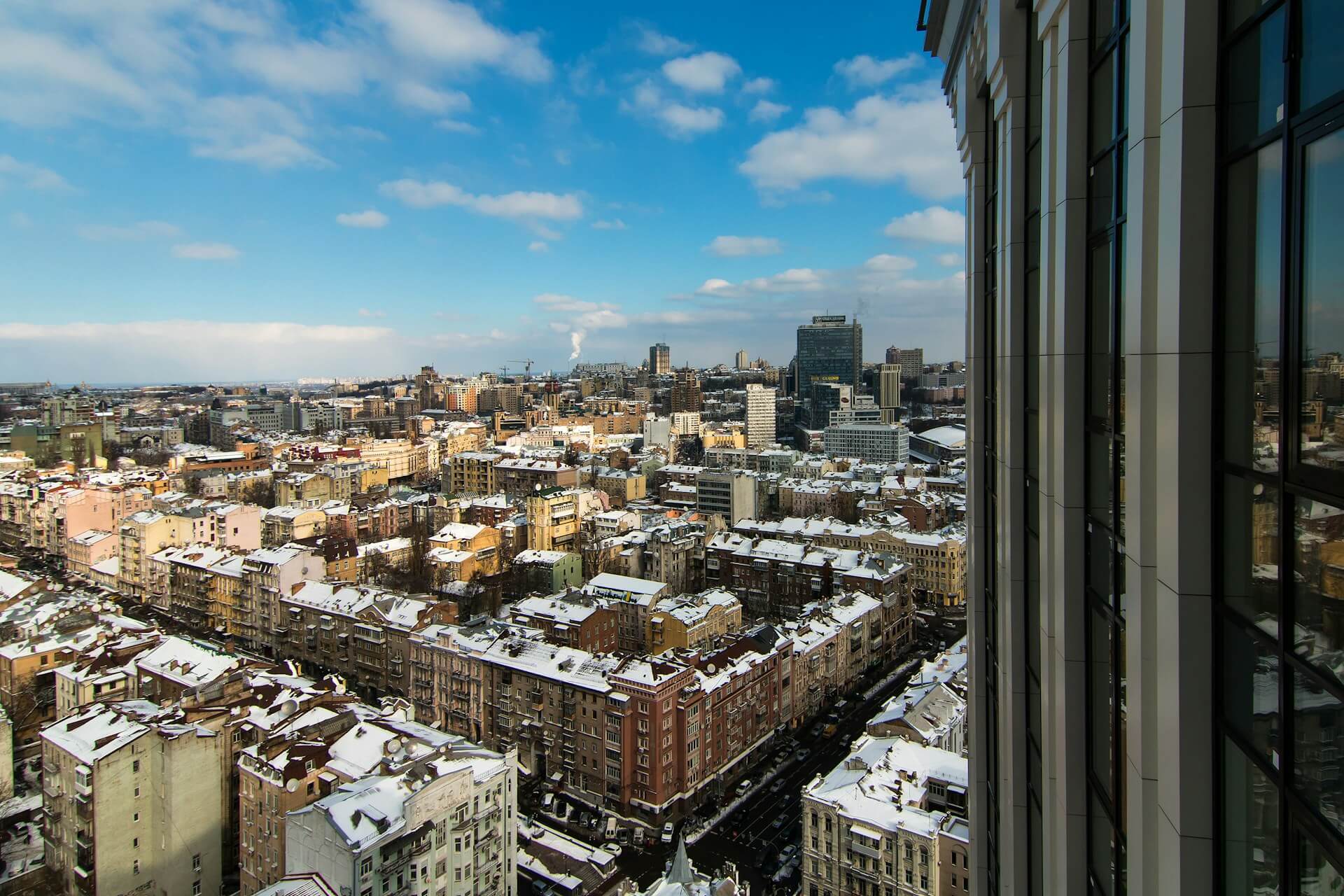Whatever their final outcomes, the 2018-2019 electoral seasons in Russia and Ukraine are and will be changing Eastern Europe’s political landscape. The Russian presidential elections of March this year and their current or future reverberations in Moscow’s power corridors as well as the Ukrainian presidential and parliamentary elections in spring and autumn next year imply new opportunities and risks in Russian-Ukrainian relations. Russia’s political leadership has already changed to an extent after Putin’s reelection on 18 March 2018. It may be further transforming, as a result of more personnel fluctuation. In Ukraine, it is widely expected that 2019 will see a major change in the composition of the executive and legislative branches, and even a rebalancing of power between the presidency, government, and parliament.
Not only will Ukraine’s next parliament be composed very differently from today’s as, for instance, the winner of the proportional part of the 2014 elections, Arseny Yatsenyuk’s People’s Front, will seemingly disappear altogether from the political scene. In her June 2018 programmatic New Course speech, the current front-runner for the upcoming presidential elections, Yulya Tymoshenko, has promised a far-reaching reset of Ukraine’s entire political system and a constitutional reform that would include a switch from the current semi-presidential to a parliamentary system, and the creation of a second chamber of parliament representing Ukrainian civil society. It is, to be sure, not clear to which degree Tymoshenko will be able to translate her current relatively solid popular support into an electoral victory, as her negative rating is also exceptionally high. Moreover, a number of new public figures, including journalists and show business representatives, as well as their support groups may soon enter the political scenery further mixing up the already crowded Ukrainian party spectrum. Ukraine thus remains as unpredictable as it has always been during the last 25 years. The only thing that seems certain is that the factional and personnel composition of the Ukrainian political elite will be transformed significantly by the end of 2019.
Reference points
The ongoing (in Russia) and forthcoming (in Ukraine) changes in leadership and direction of both countries may result in, among others, new chances for an end to, or for an escalation of, the war between Russia-led irregular separatists and Russian covert regular troops, on the one side, and Ukrainian governmental forces as well as some paramilitary units, in the Eastern parts of the Ukrainian Donets Basin, on the other. While the Russian and Ukrainian political leaders’ behavior is, in both cases, heavily guided by internal rather than foreign determinants, the domestic political implications of the war within Russia and Ukraine in both countries diverge. They contradict the belief shared by some Ukrainian and Western observers that the leaderships of Ukraine and Russia are winners of the war, on both sides of the so-called “contact line.”
The ongoing (in Russia) and forthcoming (in Ukraine) changes in leadership and direction of both countries may result in, among others, new chances for an end to, or for an escalation of, the war between Russia-led irregular separatists and Russian covert regular troops, on the one side, and Ukrainian governmental forces as well as some paramilitary units, in the Eastern parts of the Ukrainian Donets Basin, on the other.
Vladimir Putin’s Ukraine adventure since 2014 has been a principal source of his increased popularity ever since. It has even led sociologists to speak of a new “Crimea consensus” in Russian society – a largely manufactured, yet nevertheless widespread collective agreement, within large parts of Russia’s population, about the rightfulness, justice and legitimacy of Moscow’s various territorial, political, cultural and economic claims towards Ukraine. The conclusion of a Russian-South Ossetian Integration agreement on the first anniversary of Russia’s official capture of Crimea on 18 March 2015, or the move of the last Russian presidential elections to the date of the fourth anniversary of the signing of the Russian-Crimean annexation treaty on 18 March 2018 illustrate the importance of Russian imperial expansion to the support, cohesion and longevity of the Putinist regime.
This is in contrast to Ukraine and to the sudden rise of the once secondary political figure Petro Poroshenko, in spring of 2014, the then prime contender for, and current holder of, the first post-Euromaidan presidency. Among other factors, Poroshenko’s unexpected post-revolutionary prominence was connected to the annexation of Crimea and the beginning war with Russia. There was, in April-May 2014, a political presumption, in large parts of Ukrainian society, that the experienced politician and negotiator would be the right choice to bring peace and security to the country. This was deemed to be true under the difficult conditions of the Kremlin’s increasing aggressiveness towards, and of the quick socio-economic decline of, post-Euromaidan Ukraine.
Initially, the triumphant victory of the anti-oligarchic Revolution of Dignity in early 2014 had suggested a forthcoming new political era with statesmen and -women from outside the old oligarchic system. Yet, this prospect changed under the impression of Russia’s military annexation of Crimea and covert invasion in the Donets Basin or Donbas Under the shock of the loss of territory, an escalating war in Eastern Ukraine, and resulting economic dislocations, the Ukrainian population gave its preference to an experienced former minister, long-term parliamentarian and industrial magnate. Poroshenko had and still has the principal defect of being one of Ukraine’s leading oligarchs and co-founders of Viktor Yanukovych’s stigmatized Party of Regions. However, he was, at least in spring 2014, widely assumed to be able to lead the Ukrainian state out of the quickly deepening crises in its foreign affairs, internal cohesion and industrial potential.
Poroshenko had and still has the principal defect of being one of Ukraine’s leading oligarchs and co-founders of Viktor Yanukovych’s stigmatized Party of Regions. However, he was, at least in spring 2014, widely assumed to be able to lead the Ukrainian state out of the quickly deepening crises in its foreign affairs, internal cohesion and industrial potential.
The recent steep fall in Poroshenko’s popularity to fifth place among the contenders for Ukraine’s presidency has more to do, to be sure, with the post-revolutionary President’s failures in domestic affairs than with his inability to bring peace to the country and re-establish the government’s full control, at least, over Eastern Ukraine – not to mention Crimea. Thus, Poroshenko is now seen negatively by most Ukrainian voters mainly because of his continuing unwillingness to fundamentally change the nature of Ukraine’s oligarchic order. The latter includes his failure to fully and conclusively disengage from his own business interests, in and outside Ukraine. Yet, Poroshenko’s political descent is also a function of his obvious inability to fulfill the hopes of his 2014 voters to improve relations with Russia, end the war in the east, and bring back, at least, the territories of the so-called “People’s Republics” in the Donetsk and Luhansk oblasts under governmental control.
Had Poroshenko delivered on the latter campaign theme, his polling today would be probably better and provided him with a major positive campaign narrative. Many voters might have been willing to partly forgive the various inconsistencies in his conduct of domestic governance reforms, if the incumbent President could claim to have brought peace to Ukraine. However, Poroshenko was neither able to solve the major foreign issue, i.e. Ukraine’s bloody confrontation with Russia, nor sufficiently willing to push through a deep domestic transformation from oligarchy to polyarchy. As a result, Poroshenko seems now to be doomed to lose Ukraine’s upcoming presidential and parliamentary elections. In the worst case, he may repeat the fate of his former patron Viktor Yushchenko who, also as an incumbent President, lost the 2010 presidential elections, in fifth place, with 5.45%.
Elections as an opportunity
A fundamental change of leadership within the Ukrainian executive and legislature is expected in 2019. This reset could provide an international pretext for, and domestic impulse to, the solution of the Donbas conflict. To be sure, the main change of course would have to happen in Moscow rather than Kyiv. Yet, a deep change in the composition of Ukraine’s leadership could provide a window of opportunity for a reset in Russian-Ukrainian relations.
Poroshenko seems now to be doomed to lose Ukraine’s upcoming presidential and parliamentary elections. In the worst case, he may repeat the fate of his former patron Viktor Yushchenko who, also as an incumbent President, lost the 2010 presidential elections, in fifth place, with 5.45%.
In combination with cumulating effects of Western sanctions against Moscow, this could lead the Kremlin to rethink and eventually reorient Moscow’s strategy towards Kyiv. Ideally, a fresh start in Russian-Ukrainian diplomacy would allow and motivate Putin to finally decide to withdraw Russian troops, emissaries, irregulars and support from the Donets Basin. In this connection, a UN peacekeeping mission – perhaps, aided by a EU civilian detachment to the Donbas – could be a mechanism that provides opportunities for both, to either really implement or to merely fake a solution of the conflict – an ambivalence that all involved parties are keenly aware of.
Donbass issues
In spite of the risks and complications of its realization, the idea has been catching the imagination of many Western diplomats, politicians and experts dealing with Donbas conflict, since Putin indicated in September 2017 his willingness to discuss a UN involvement, in principle. To be sure, the idea’s pioneering as well as already surprisingly comprehensive and detailed public outline had been provided by the Nuremberg political analyst Andrej F. Novak already in November 2014. The Ukrainian government had submitted an official request for a UN peacekeeping mission in 2015. Since then, a number of prominent analysts of different countries have published more or less elaborate texts detailing the prospects and challenges of the plan amounting to a peacebuilding and not only peacekeeping operation. They included policy briefs authored by, among others, Oleksiy Melnyk (Razumkov Center, Kyiv) in 2016, Andrey Kortunov (Russian International Affairs Council, Moscow) in 2017, as well as Alexander Vershbow (Atlantic Council, Washington, DC), Vitalii Kulyk and Maria Kucherenko (Center for Civil Society Studies, Kyiv) and Liana Fix and Dominik P. Jankowski (Carnegie Europe, Brussels) in 2018. The two most comprehensive assessment of the chances and prospects of a UN peacekeeping mission have been published, in December 2017, by the International Crisis Group (Kyiv) and, in February 2018, by the Hudson Institute (Richard Gowan, Washington, DC). These and some other analyses outline the various mechanisms and hindrances of an implementation of the plan, by sending a combined multinational military, police and civilian mission to the Donbas, with participation of the UN, OSCE and/or EU.
The beauty of a transitional UN peacekeeping or/and -building mission in, and international civilian administration of, the Donets Basin is twofold. The first advantage of the scheme is that it means the introduction of a neutral third force into the Donbas conflict, with a mandate that would go far beyond the current OSCE special monitoring mission. A temporary UN or combined UN/EU/OSCE mission to the Donets Basin would provide for a conversion period with the solution process, by way of establishing an international temporary administration supplanted by sufficiently large and well-armed foreign peacekeeping troops as well as a provisional multinational police force. This arrangement seems, in fact, to be the only feasible way to realize in practice the transfer of power, over the currently occupied Donbas territories, from Moscow to Kyiv, and the re-establishment of elementary socio-political order in the area of the current so-called “People’s Republics”.
In spite of the risks and complications of its realization, the idea has been catching the imagination of many Western diplomats, politicians and experts dealing with Donbas conflict, since Putin indicated in September 2017 his willingness to discuss a UN involvement, in principle.
The Minsk agreements of 2014 and 2015 are, by themselves, curiously deficient. They foresee an unrealistically smooth transition from the Kremlin’s current de facto rule over the covertly occupied and heavily militarized eastern areas of Ukraine’s Donbas to Kyiv’s reacquisition of full control over its lost territories. It remains unclear how this can happen after the Russian state’s presumed removal of its crypto-regular troops (i.e. covert army units), political emissaries and financial support from Ukraine’s Donets Basin. Even after such a hypothetical withdrawal, it would take a full-scale Ukrainian liberation war to capture, disarm or/and chase away the remaining anti-Ukrainian local or invited para-militaries, extremists, and agents who, to this day, are being, in one way or another, financed, armed, supported, trained or/and led by Moscow. This transition seems improbable without a temporary, but robust third-party intervention from the UN, OSCE or/and EU, into the region.
The second advantage of the plan is that it can, once a sustainable solution becomes the preferable option for Moscow, be used by the Kremlin to save its face before the nationalistically agitated parts of its misinformed society. In as far as Russia will have to give its approval to an international armed peacekeeping mission within the UN Security Council, it can internationally influence the modus of the mission. For instance, it can insist on a certain subdistrict of the operation area being put under the control of a UN troop contingent from an officially or unofficially allied state of Russia. Such an informally pro-Russian territory could function as a safe haven for various irregulars from the currently occupied parts of the Donbas.
Above all, the Kremlin could internally spin an international mission to the Donbas as a Russian pacifist initiative to help the “suffering” Russian speakers of Eastern Ukraine. The latter interpretation, to be sure, would be a gross distortion of the origins and nature of the conflict in the Donets Basin. Yet, an employment of international peacekeeping forces endorsed by Russia in the UN Security Council would provide the Kremlin with a more or less convenient way out of the current confrontation – if and when Moscow starts defining, for itself, such an exit as principally useful or even necessary. To reach such a change of mind in the Kremlin, Western sanctions related to the Donbas conflict will have to not only continue, but – in view of their limited success so far – to further increase and be better implemented.
For over four years now, there is a lingering crypto-war (i.e. covert inter-state military conflict) between Europe’s two largest countries, including almost daily shooting with heavy arms and weekly wounded or dead. This happens in the immediate vicinity of Europe’s largest nuclear power plant at Zaporizhia. In spite of the enormous stakes in either the solution or escalation of this consequential confrontation, European attention to this only seemingly frozen conflict remains, however, limited.
Open eyes
For over four years now, there is a lingering crypto-war (i.e. covert inter-state military conflict) between Europe’s two largest countries, including almost daily shooting with heavy arms and weekly wounded or dead. This happens in the immediate vicinity of Europe’s largest nuclear power plant at Zaporizhia. In spite of the enormous stakes in either the solution or escalation of this consequential confrontation, European attention to this only seemingly frozen conflict remains, however, limited. Western slack towards Moscow remains the pre-eminent approach in the EU and most of its member states. While some EU institutions and figures have invested considerable time and energy in the conflict’s resolution, the majority of European politicians, diplomats and journalists suffer from a – what might be called a – “post-geographical externalization syndrome.” Obviously, Ukraine is geographically close to, and has a long border with, the EU. Nevertheless, Ukraine’s enormous domestic and foreign challenges continue to be, by many EU politicians and diplomats, externalized as issues of secondary importance to securing European stability and prosperity.
The repercussions of a possible flaring up of the Russian-Ukrainian war and, in that case, an increasingly possible collapse of the already battered Ukrainian state would be grave not only for Ukrainians, but for other East European nations too, if not for the EU as a whole. Yet, Western political elites and public opinion remain surprisingly escapist or/and optimistic regarding Moscow’s intents and instruments in Ukraine. While some minor sanctions have been introduced, Western business with Russia – above all, energy trade – still largely happens as usual. Instead of taking a clear position with regard to Moscow’s behavior in the former Soviet space or Syria, European Commission President Jean-Claude Juncker opined in May 2018 that “this Russia bashing has to be brought to an end.” It would be sad if only another major calamity on the Ukrainian-Russian “contact line”, comparable to or even worse than the July 2014 MH17 disaster, were to finally push the EU – as Moscow’s major trading and investment partner – to become real about the explosive situation at its eastern border.




